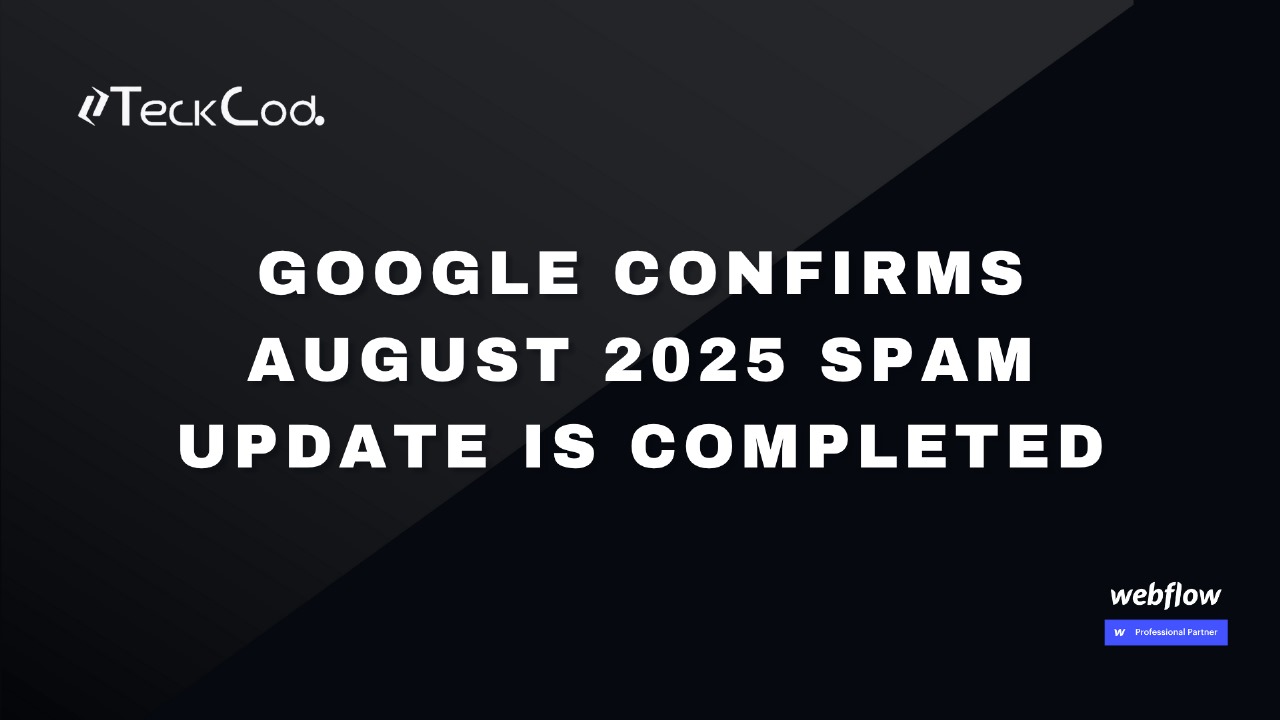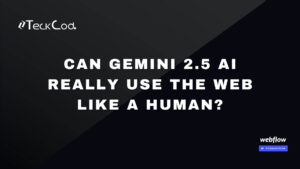Google has officially confirmed that the August 2025 Spam Update has fully rolled out worldwide. The rollout began on August 26, 2025, and completed on September 22, 2025, lasting nearly twenty-seven days.
Unlike Google’s broader core updates, which adjust ranking systems on a global scale, this was a spam-focused update—aimed at detecting, filtering, and demoting websites that violate Google’s spam policies.
For website owners and SEO professionals, this announcement is more than a technical detail; it is a reminder that Google remains relentless in its mission to protect search quality. If you noticed unusual traffic drops or ranking fluctuations in late August through mid-September, this update may be the reason.
What is a Spam Update?
A spam update is Google’s way of reinforcing its long-standing spam policies through algorithmic improvements. Unlike manual actions, which target individual sites, spam updates are automated, sweeping across the web to catch common patterns of manipulative behavior.
The focus is not on rewarding new winners but on penalizing violators. Practices such as auto-generated text with no real value, hidden links or cloaked content, excessive keyword stuffing, and link schemes all fall into this category.
Over the past few years, Google has leaned heavily on its SpamBrain AI system, which is trained to detect subtle patterns of spam across billions of pages. With every spam update, SpamBrain gets sharper, making it increasingly difficult for low-quality content to escape detection.
What Was the August 2025 Spam Update Targeting?
While Google rarely discloses the full scope of any update, the industry consensus is that this rollout tightened enforcement around several recurring problems. Many SEOs observed that thin, AI-generated content, spammy backlinks, and low-value affiliate sites were among the hardest hit.
Reports also surfaced of pages suddenly disappearing from Google’s index, suggesting that the update was not just about ranking adjustments but also about cleansing the index of low-quality pages altogether. Another important area under scrutiny was parasite SEO abuse, where third-party pages are published on authoritative domains purely to manipulate rankings.
These practices undermine the trust users place in high-authority sites, so it is no surprise that Google took stronger measures against them. Taken together, the August 2025 spam update acted as a filter: it did not necessarily promote new sites but worked decisively to demote those that failed to meet policy standards.
Did the Update Cause Major Ranking Shifts?
Compared with core updates, the August 2025 spam update caused less widespread volatility, but for those affected, the consequences were significant. Many site owners reported indexing delays and a sudden loss of visibility for entire sections of their websites.
The most turbulent periods came right after the launch in late August and again around September 9, when ranking trackers showed noticeable spikes. Unlike a core update, where shifts often redistribute visibility among winners and losers, this update was largely penalty-driven.
Sites already following Google’s guidelines experienced little to no movement, while those leaning on shortcuts or manipulative practices saw steep declines. This distinction is important because it shows that clean, well-maintained websites were largely insulated from the turbulence.
How Does the August Update Differ From Core Updates?
It is easy to confuse spam updates with core updates, but they serve different purposes. A core update recalibrates how Google interprets relevance, intent, and quality signals across the entire search index. They can create broad reshuffling, where some websites rise dramatically while others fall.
Spam updates, however, are narrower. They function more like an enforcement mechanism, identifying violators and filtering them out. The August 2025 spam update did not attempt to rethink how quality is measured; instead, it applied existing rules more rigorously through enhanced detection systems. This is why the impact, while sharp for those affected, did not ripple across the entire SEO landscape the way a core update often does.
Can Affected Sites Recover After a Spam Update?
Yes, recovery is possible, but it is neither immediate nor guaranteed. Unlike manual actions, there is no reconsideration request for algorithmic penalties. Instead, site owners must correct violations and wait for Google to reprocess their content.
The first step toward recovery is a content audit. Pages with thin or auto-generated text should be rewritten or removed, and duplicate material should be consolidated into more comprehensive resources. Link profiles should be carefully reviewed to identify manipulative backlinks that could harm credibility.
Beyond content and links, websites should also invest in building trust signals: clear author bios, references to credible sources, transparent contact information, and strong user experience all contribute to what Google calls E-E-A-T (Experience, Expertise, Authoritativeness, and Trustworthiness).
Patience is key. Even after improvements, recovery depends on how quickly Google re-crawls and reassesses your site. For some, visibility may return in weeks; for others, it can take months. The crucial point is that compliance is the only path back.
Previous Spam Updates
The August 2025 Spam Update follows a series of spam-focused rollouts over the last few years. The most recent before this was the December 2024 Spam Update, which launched on December 19, 2024 and completed on December 26, 2024.
Here’s a look back at confirmed Google spam updates:
- December 2024 Spam Update – Dec. 19 to Dec. 26, 2024
- June 2024 Spam Update
- March 2024 Spam Update
- October 2023 Spam Update
- December 2022 Link Spam Update
- October 2022 Spam Update
- November 2021 Spam Update
- July 2021 Link Spam Update – Two-part rollout on June 23 and June 28, 2021
The timeline underscores a clear trend: Google is committed to ongoing enforcement. Spam updates are not rare events but a predictable rhythm in the search ecosystem, meaning that sites relying on manipulative tactics should expect to be caught sooner rather than later.
Takeaway From This Update
The message from the August 2025 Spam Update is clear. Google is not only committed to filtering spam but is also increasingly effective at it. SpamBrain and related AI systems are evolving quickly, and what might have worked as a loophole a year ago is unlikely to survive today.
For SEO professionals and site owners, the safest strategy is also the simplest: focus on quality, trust, and user experience. Short-term gains from spammy tactics may seem attractive, but they come with a heavy risk of collapse when updates like this roll out. In contrast, websites built on originality, authority, and compliance continue to weather these storms with little disruption.
FAQs
What is Google’s new update in 2025?
In 2025, Google launched the August Spam Update to remove low-quality content, the June Core Update to boost higher-quality AI-safe content, and the March Core Update that made helpfulness a key ranking factor. In September, Google also upgraded Discover so users can follow creators directly.
What is the latest Google algorithm update in 2025?
The most recent are the June and March Core Updates, which prioritize helpful, original, and user-focused content, strengthen E-E-A-T, and reduce spam. These updates rewarded strong content and technical SEO, while outdated or thin content saw declines.
Are Google updates good or bad?
Google updates are meant to improve search quality. They benefit websites with helpful, trustworthy content that matches user intent, while reducing rankings for spammy or low-value pages.
Conclusion
The August 2025 Spam Update stands as another reminder that Google’s top priority is protecting users from low-quality and manipulative results. While it did not cause the sweeping reshuffles of a core update, it decisively penalized sites that relied on shortcuts and reinforced the importance of ethical SEO.
For businesses and website owners, the lesson is straightforward: invest in strategies that are sustainable. Prioritize authentic content, technical stability, and user-first design to remain resilient no matter how often Google updates its systems.
At TeckCod, we specialize in exactly that. Whether you need best SEO services, web development, Webflow expertise, or top UI/UX design, our team ensures that your website remains strong, stable, and growth-ready—even when major algorithm updates occur. With the right approach, updates like this stop being threats and instead become opportunities to rise above competitors who still rely on outdated tactics.
In today’s competitive digital world, the safest path is also the smartest: build for users, stay compliant with Google’s policies, and partner with professionals who know how to keep you ahead of every change.
Explore More Expert Insights
Explore expert guides on UI/UX design, brand identity, and web solutions with WordPress, Shopify, and development to elevate your next digital project.
- GEO vs SEO: Key Differences in Search & Generative AI – Explore How GEO Differs from Traditional SEO
- Webflow vs WordPress: Which One Is Better? – Compare Design Freedom, Speed & SEO Control
- Can Gemini 2.5 AI Really Use the Web Like a Human? – Uncover Gemini’s Real Web-Browsing Power
- What Is ChatGPT Atlas Browser and How It Transforms Browsing – Next-Gen AI Browser That Changes Web Experience
- AI Agents in Everyday Coding: The Rise of Vibe Coding – How AI Agents Are Revolutionizing Programming




